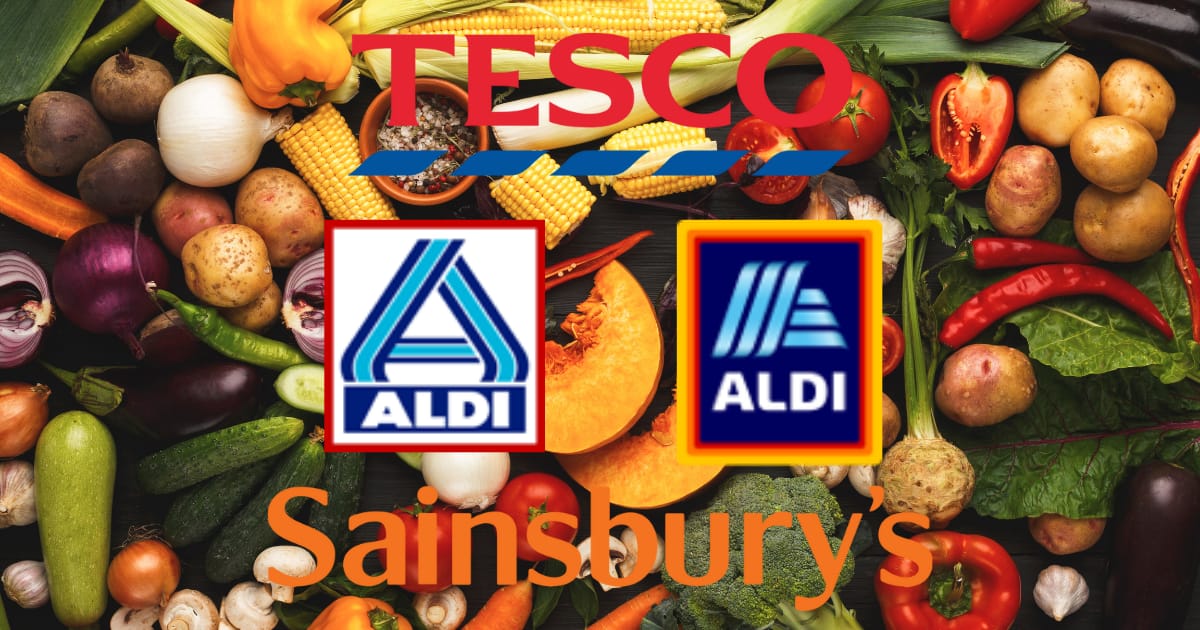- The Bread Bin
- Posts
- Aldi’s Expansion Spree Puts Tesco and Sainsbury’s on the Defensive
Aldi’s Expansion Spree Puts Tesco and Sainsbury’s on the Defensive
Aldi profits fell, yet it’s opening 80 stores. The real question: which listed rivals can withstand the squeeze and are they cheap enough for a value investor?

Aldi is a private company but its growth is forcing listed rivals to make tough choices. Aldi just reported a 21% drop in UK operating profit, down to £435.5 million, thanks to higher staff costs and price cuts.
Yet instead of slowing down, it’s building 80 new stores in the next two years. That’s a headache for Tesco (TSCO.L) and Sainsbury’s (SBRY.L), who have shareholders to keep happy while defending margins against Aldi’s low-cost model.
Why it matters
When discounters expand, listed incumbents usually have two levers: cut prices to defend share (which hurts profits), or invest more heavily in loyalty schemes and premium offerings.

Both Tesco and Sainsbury’s are already stretched. Tesco has been leaning on Clubcard discounts, while Sainsbury’s is balancing food against weaker clothing and general merchandise.

Aldi, unconstrained by quarterly earnings reports, is effectively playing the long game. For investors, the trade off is clear: do you want the compounding of a shareholder-friendly Tesco, or the growth disruption that Aldi brings (and you can only access indirectly through peers and suppliers)?
Investors rationale
Let’s turn the problem inside out and take a very different view:
Q: What if trade down ends?
A: If inflation falls, Tesco’s broader range and convenience network may give it more upside than Aldi.
Q: What can I see in plain sight?
A: If Tesco car parks are full and the valuation is cheap, maybe this is an option.
Aldi is the story you can see in your neighborhood but as an investor, buy Tesco if the car park is full and the valuation is cheap.

You could do some on the ground analysis and see what’s happening in your neighbourhood.
Evidence & metrics
Aldi made £435 million in profit last year in the UK, but that was 21% less than the year before. The hit came from higher wages, more investment, and keeping prices low.
UK grocery prices are still climbing, the forecast is 5.7% higher by Christmas. That keeps the spotlight on discounters like Aldi.
Market share snapshot: Tesco is still the giant with about a quarter of the market, Sainsbury’s holds 15%, Aldi around 10%, and Lidl close behind at 9%.
Profit margins tell the story: Tesco makes about 4p profit on every £1 of sales, Sainsbury’s just 2p. Aldi runs on even thinner margins but makes it up in volume.
For income-seeking investors, Tesco and Sainsbury’s both pay a dividend around 4 - 5% a year which is like a savings account on steroids, assuming the payouts hold.
Risks & counterpoints
If Aldi keeps pushing prices down, Tesco and Sainsbury’s might be forced into a price war and that usually means slimmer profits for everyone.
On the flip side, if inflation cools faster than expected, shoppers may drift back to the big supermarkets for convenience and variety, leaving Aldi with less momentum.
And don’t forget about debt. With government borrowing costs (gilts) at their highest since the ’90s, it’s getting more expensive for companies to refinance loans. That could eat into Tesco’s or Sainsbury’s bottom line.
What a savvy investors might do next
Line Tesco and Sainsbury’s up side by side. Forget the jargon and just ask: a) which one looks cheaper for the profits it makes, and b) which one owns more than the market gives it credit for? That’s your “margin of safety.”
Keep an eye on the car parks. Aldi’s racing ahead with new stores, but Tesco and Sainsbury’s are fighting back with loyalty schemes and discounts. Watch which one’s pulling in the shoppers.
Think beyond the supermarkets. The companies making Aldi’s packaging, moving its trucks, or producing its food are quietly cashing in, no matter who wins the grocery wars.
Already subscribed, then you don’t have to do anything except enjoy our great content.
If you haven’t subscribed yet and want weekly clarity in volatile markets. Sign up now to get these filtered insights straight to your inbox.
Quick favour - what part of today’s post stuck with you? The charts, the story, or the takeaway? If you think a mate would get something out of it too, hit the share button at the top of the page and pass it on. We’re trying to give as many people as possible, the chance to make their money work harder.
⚠️ Disclaimer:
This is for educational purposes only, and is not financial advice. Always do your own research before making investment decisions.